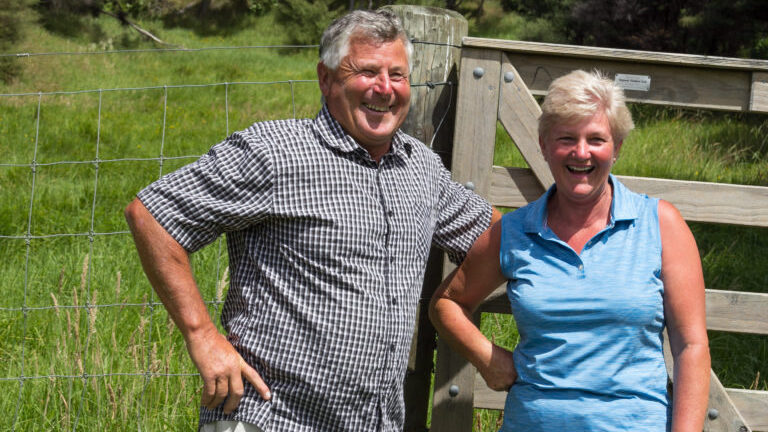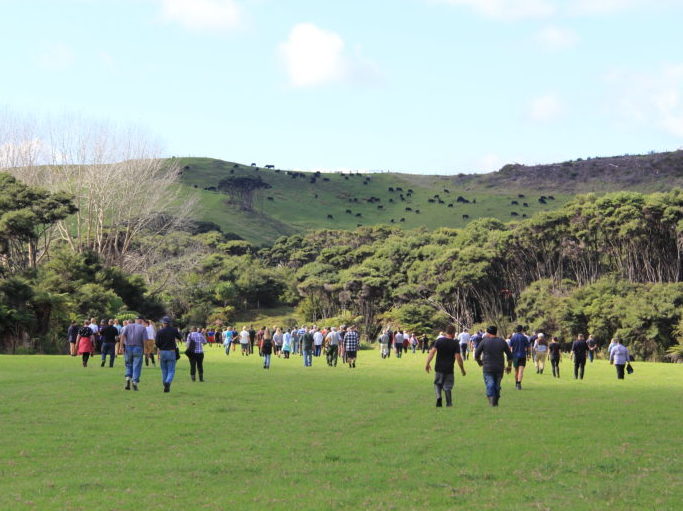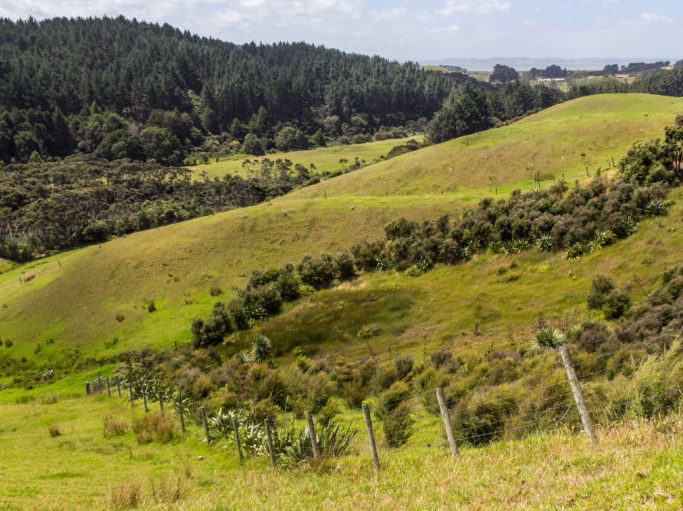Ross and Eleanore Webber farm Angus beef on a 195-hectare property at South Head, overlooking the Kaipara Harbour and have been trapping on their farm since establishing two QE II covenant blocks 15 years ago.

“We’ve got more proactive in the last 2-3 years,” says Ross, “Especially trapping possums. Possums were eliminated on the peninsula 30 years ago. For about 15 years we didn’t see a possum, then in the last 5 years they’ve migrated back in.”
It’s disheartening to see, but the Webbers and their neighbours have stepped up to the challenge of getting on top of possums all over again.

“The peninsula is about 5 miles across,” Ross explains. “The possums have got three vectors through – South Head Road, the Kaipara Harbour edge and the State Forest. They’re spreading back down the peninsula. On the farm we’ve caught 38 possums in leghold traps in the last year.”
In the last decade or so, many farms have been subdivided and that may have aided the possums’ return.
“There are a lot more lifestyle blocks now,” says Ross, “And they weren’t so active with trapping. But now we’ve got a wonderful group – the South Kaipara Landcare Group. They’re very proactive, with lots of talks, seminars on trapping and weeding and planting days.”
Ross was on the committee of the Landcare Group, for many years from its early beginnings 15 years ago, but has now stepped back for a younger group of members coming on. Ross and Eleanore remain keen members of the group, however.
Ross and Eleanore were Auckland regional winners of the 2019 Ballance Predator Free Farm Award and recently held an open day to showcase their farm, predator control and waterway restoration work.
“We have been frantic – busy beavers getting the property ready for the field day, which was last Friday,” says Eleanore. “What a great success it was too. We had around 150 people viewing the property. It was a fantastic fine day with no wind, perfect. Representatives from Auckland Council were present showing that we are in the Auckland area and proving that what we do, can be done.”
“There was a good mix of people,” adds Ross, “It was good to see a lot of younger ones from Kaipara College, my old school.”
“Ross had a couple of traps out and demonstrated how they work and where they are most effective,” says Eleanore. “Work continues setting traps. Actually prior to the field day we caught 4 possums in 5 days!”
Ross is enthusiastic about the success of his DOC 200 traps.
“They’re stunning,” he says. “They account for a lot of hedgehogs and we also catch about 20+ rats per year. Stoats are not a big problem here, but they show up occasionally and we catch a couple of weasels per year. We also get a lot of wild cats, but I tend to shoot those when I see them.”

Areas on the peninsula around Rotototoa Reserve and the Auckland Council Park, Te Rau Puriri, are important to the future planning of South Kaipara Head and Auckland. Deer fencing and eradication are vitally important in these areas.
“Fallow deer are throughout the peninsula,” explains Ross “And three years ago we talked to Chris Floyd from the QE II Trust about the problem. He suggested we apply for money from the Stephenson Trust Fund to fence off the remnant wetland bush block. The fencing was a 50:50 joint venture and has kept deer out of a major area. We’ve fenced other areas ourselves since then,” he says.
Since then, they’ve seen a visible change in the fenced blocks.
“We can see new growth on the trees and natives,” says Ross. “It’s a lovely change. We’re planting extra trees as well and we can now just plant them. There’s also a lot of regenerating ti-tree and ferns. We’re trying to encourage trees on all the blocks. There’s a lot more bird activity too. The ‘cargo carriers’ – wood pigeons are turning up.”
Eleanore and Ross use eco-sourced natives for their plantings.
“We use 2 local nurseries – Homestead Nursery and the South Kaipara Landcare Nursery run by Elon Bycroft. Elon eco-sources all seed and trees from the local area – including from a lovely reserve 5 miles away.”
With the Webbers’ farm overlooking Kaipara Harbour and only 3-4 kilometres from the harbour edge, looking after waterways is also very important to the couple.
“To look after Kaipara Harbour, you can’t just start at the edge,” says Ross. “You have to look after the waterways all the way down. Looking after the catchment is a big part for us. All 3 farm catchments flow into the harbour and there are big mudfish, kokopu in the waterways.”
As the third generation of his family to farm this land, with son Matthew now also sharing the farm management, Ross and Eleanor are farming for the future.
“Homestead Nursery now source their manuka from our farm,” says Ross, proudly. “We realise with the QE II covenants, that the blocks need to go beyond us – to continue in perpetuity.”

